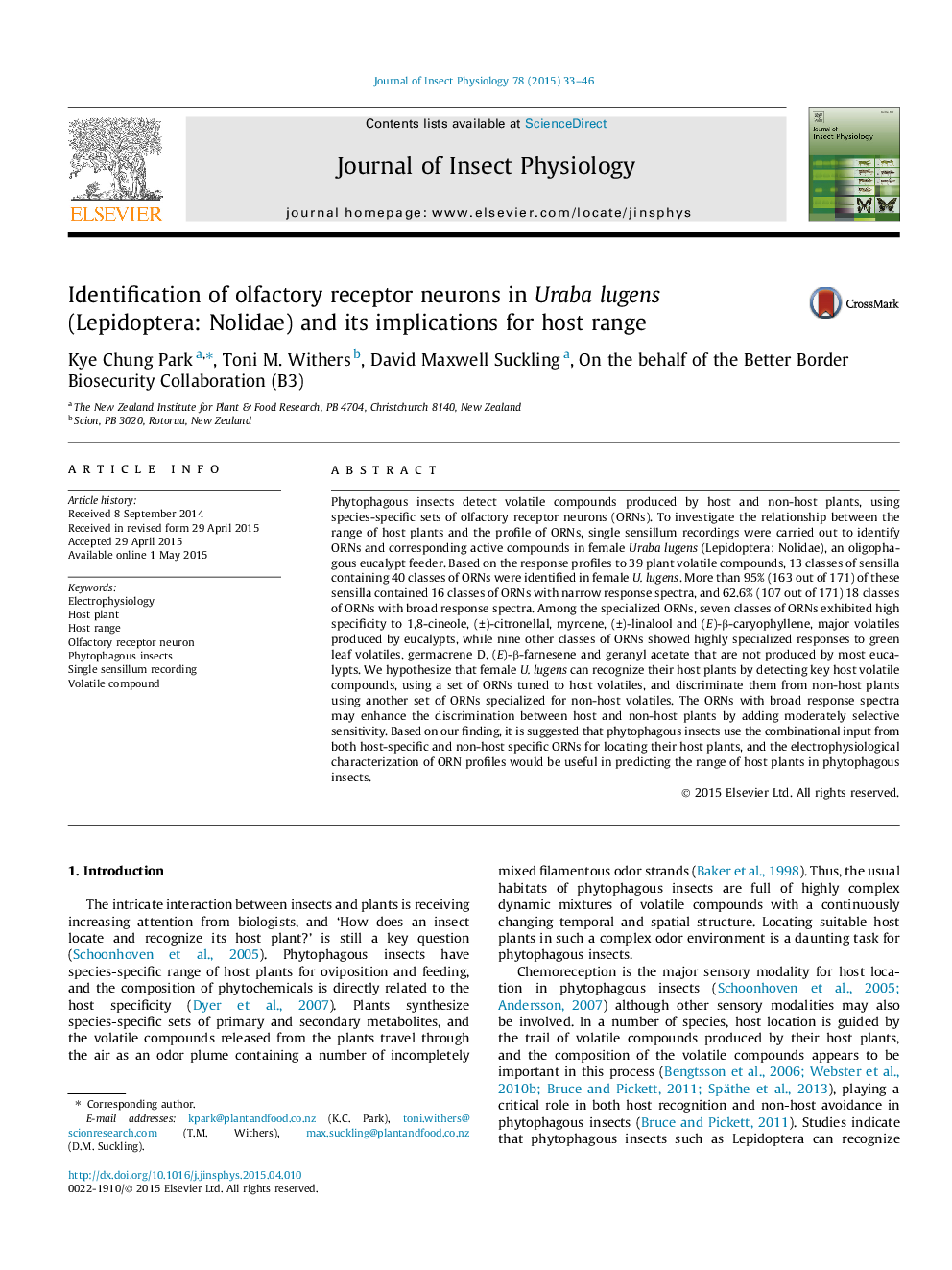| کد مقاله | کد نشریه | سال انتشار | مقاله انگلیسی | نسخه تمام متن |
|---|---|---|---|---|
| 2840350 | 1570992 | 2015 | 14 صفحه PDF | دانلود رایگان |

• Moths have different classes of olfactory receptor neurons for plant volatiles.
• A set of olfactory receptor neurons are specialized for host volatiles.
• Another set of olfactory receptor neurons are specialized for non-host volatiles.
• The profile of olfactory receptor neurons is related to host range.
Phytophagous insects detect volatile compounds produced by host and non-host plants, using species-specific sets of olfactory receptor neurons (ORNs). To investigate the relationship between the range of host plants and the profile of ORNs, single sensillum recordings were carried out to identify ORNs and corresponding active compounds in female Uraba lugens (Lepidoptera: Nolidae), an oligophagous eucalypt feeder. Based on the response profiles to 39 plant volatile compounds, 13 classes of sensilla containing 40 classes of ORNs were identified in female U. lugens. More than 95% (163 out of 171) of these sensilla contained 16 classes of ORNs with narrow response spectra, and 62.6% (107 out of 171) 18 classes of ORNs with broad response spectra. Among the specialized ORNs, seven classes of ORNs exhibited high specificity to 1,8-cineole, (±)-citronellal, myrcene, (±)-linalool and (E)-β-caryophyllene, major volatiles produced by eucalypts, while nine other classes of ORNs showed highly specialized responses to green leaf volatiles, germacrene D, (E)-β-farnesene and geranyl acetate that are not produced by most eucalypts. We hypothesize that female U. lugens can recognize their host plants by detecting key host volatile compounds, using a set of ORNs tuned to host volatiles, and discriminate them from non-host plants using another set of ORNs specialized for non-host volatiles. The ORNs with broad response spectra may enhance the discrimination between host and non-host plants by adding moderately selective sensitivity. Based on our finding, it is suggested that phytophagous insects use the combinational input from both host-specific and non-host specific ORNs for locating their host plants, and the electrophysiological characterization of ORN profiles would be useful in predicting the range of host plants in phytophagous insects.
Figure optionsDownload as PowerPoint slide
Journal: Journal of Insect Physiology - Volume 78, July 2015, Pages 33–46